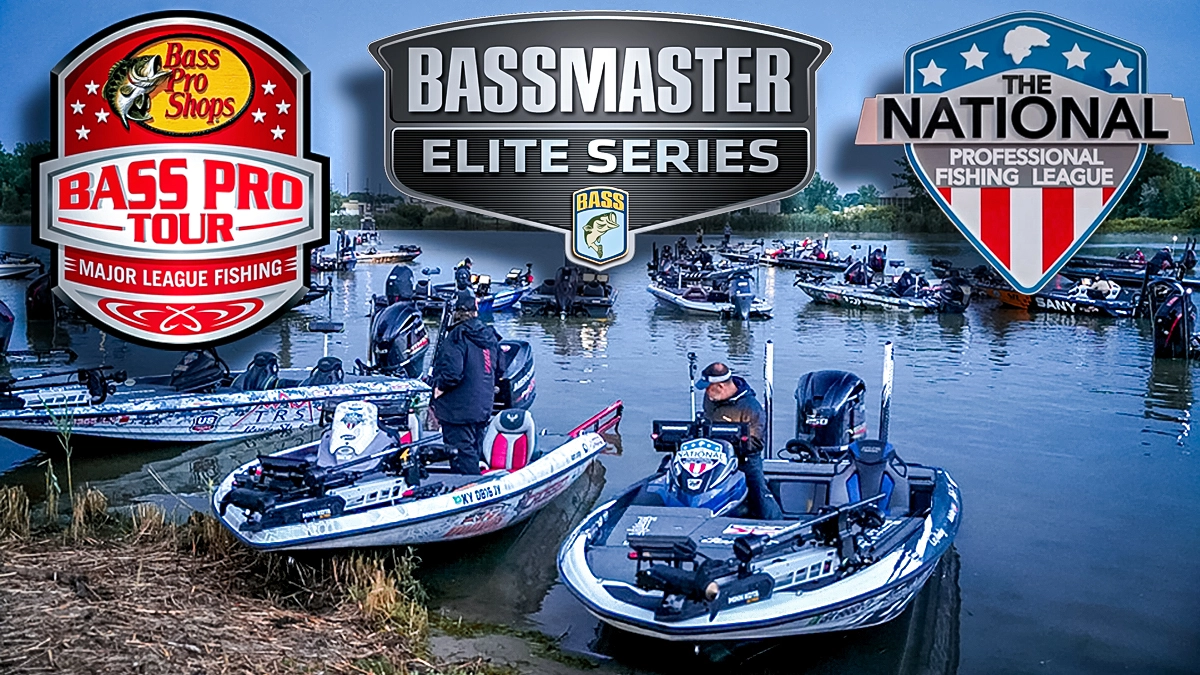Where is professional bass fishing headed in 2025 and beyond? Right now, it’s a time of flux and change, and as is so often the case, we are likely unaware of the biggest difference-makers until they’re in our rearview.
As the bass fishing world deals with new technologies, a changing economy, and an ever changing world, the fishing continues. Let’s try to separate the signal from the noise and take a look at what’s being shaken up in the bass world for 2025, and what that might mean for leagues, anglers, and fans.
The Big Forward-Facing Sonar Question
Competitive bass fishing, by its very nature, depends on change to fuel better catches and fan interest. Like a Las Vegas casino where a small percentage “house advantage” leads to massive profits, the angler who can find that differentiating factor can enjoy a meaningful ability to beat the competition – or at least get a head start.
I’ve seen a common and repeated pattern in the 40 years I’ve been following the sport concerning anglers and gear. When Randy Dearman introduced braided line, he won a major tournament on Rayburn. The early dropshotters like Aaron Martens could beat other anglers stuck in their Bubba ways. And, anglers who were willing to believe that the Senko was more than just a “co-angler’s friend” mopped up. Anglers willing to embrace new, valid techniques often pull ahead of the competition, and then things change for everyone soon after.
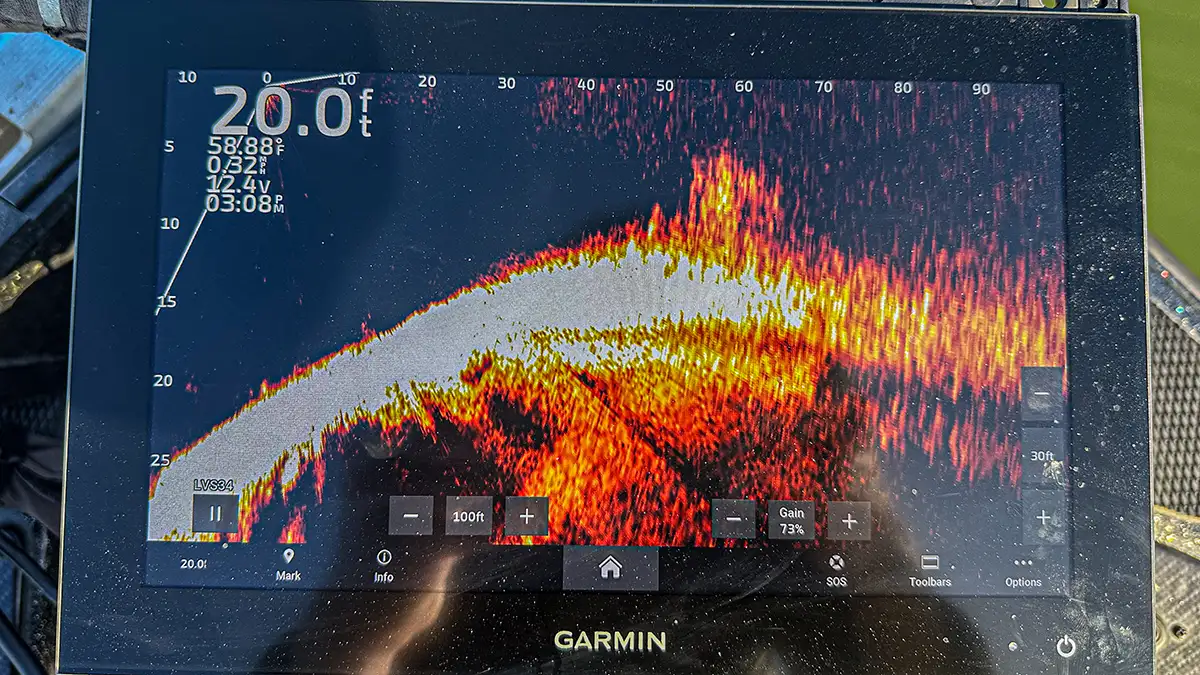
Yet, somehow, forward facing sonar (FFS) and the changes it has wrought feel different. There’s no doubt that the anglers who grasped its significance earliest, like Patrick Walters, Dustin Connell, Jacob Wheeler, and the Johnston brothers, made hay while the sun was shining.
Now that everyone (save for perhaps John Cox) has FFS, and know what a gamechanger it is, the advantages have still been muted — you can see this at weigh-ins where everyone is within spitting distance of one another. Nevertheless, it’s become clear that in some tournaments, “if you’re not scopin’, you’re hopin’.”
How the Tours Addressed FFS
I’m still agnostic about whether FFS is good, bad, or inconsequential for the future of the sport. I have it on my boat. I’m not very good at it. I don’t love watching TV, and I don’t love watching bed fishing on TV, either. The technology is here, and the major marine electronics companies show no signs of letting off the gas.
As both military and civilian applications progress, the technology could become truly scary. But we’re not there yet. At least I don’t think we’re there. That led to the tours taking very different approaches toward what technologies they would allow.
Bassmaster Elite Series
Bassmaster Elite Series officials announced what they referred to as “technology standardization” rules. In other words, FFS is allowed at all times, but competitors are limited to one live sonar transducer, which must be on a bow-mounted trolling motor.
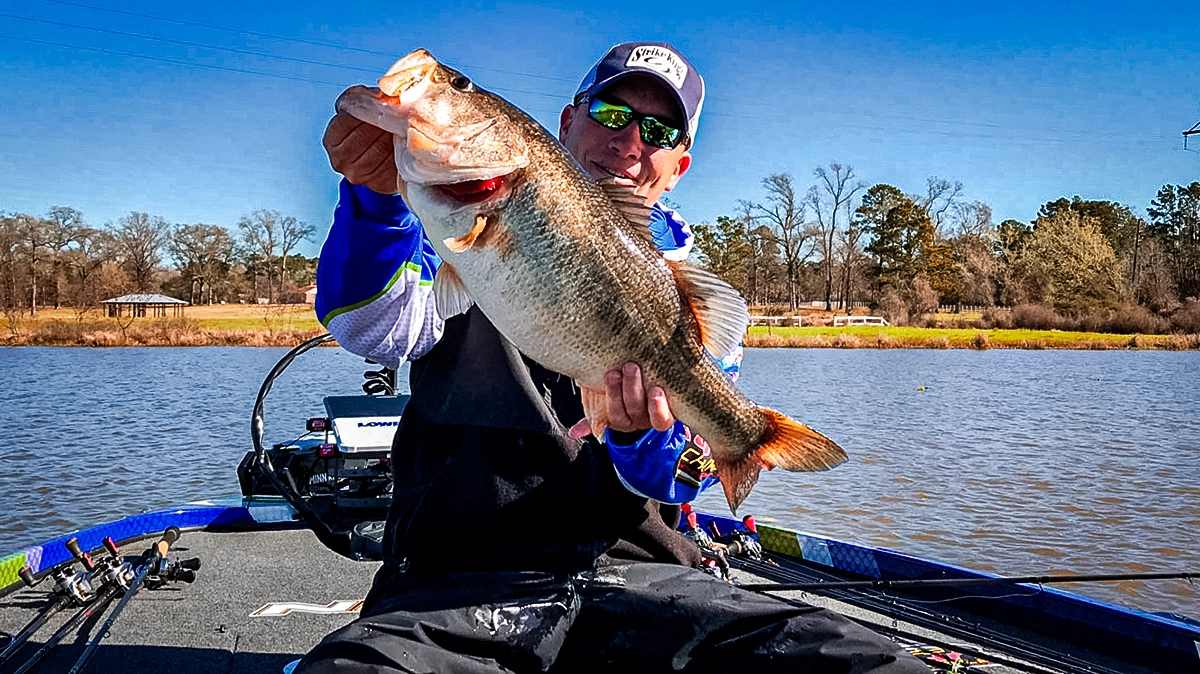
Additionally, competitors may only have 55 inches of screens total on their boat. This last requirement seems like less of a limitation on technology than a safety precaution – as more screens got added, it became tougher to see over the bow, particularly in rough or stormy conditions.
Bass Pro Tour
At the Bass Pro Tour, they came up with a solution that, depending on how you look at it, may reflect Solomonic wisdom or a case of splitting the baby.
The tour’s competition days are segmented into three different 2 1/2 hour periods with intermittent 15 minute breaks. Anglers may only use their FFS for one period each day, and they must declare their intent to do so during the preceding break. In effect, they’re recognizing that FFS may provide a strategic advantage and turning the decision about when to employ it into an element of the game.
National Professional Fishing League
Meanwhile, the upstart National Professional Fishing League (NPFL) made the most restrictive rules of the three.
“Starting with the 2025 season, the NPFL will prohibit the use of real-time imaging units…during official practice and competition. Other sonar (e.g., 2D, side imaging, 360, et al.) will continue to be permitted. The use of future technology will be evaluated on a case-by-case basis,” said an NPFL statement issued in September 2024.
Their championship will be conducted using 2024 rules. While NPFL President Brad Fuller said the decision was about “upholding the tradition and integrity of competitive bass fishing,” he also made clear that it was “ultimately a business decision.”
Indeed, it is one that at least in the short term paid off, as the NPFL got a host of positive feedback and approbation from those who wanted to restore more “traditional” fishing. Their field gained a number of pros who will also be fishing another tour.
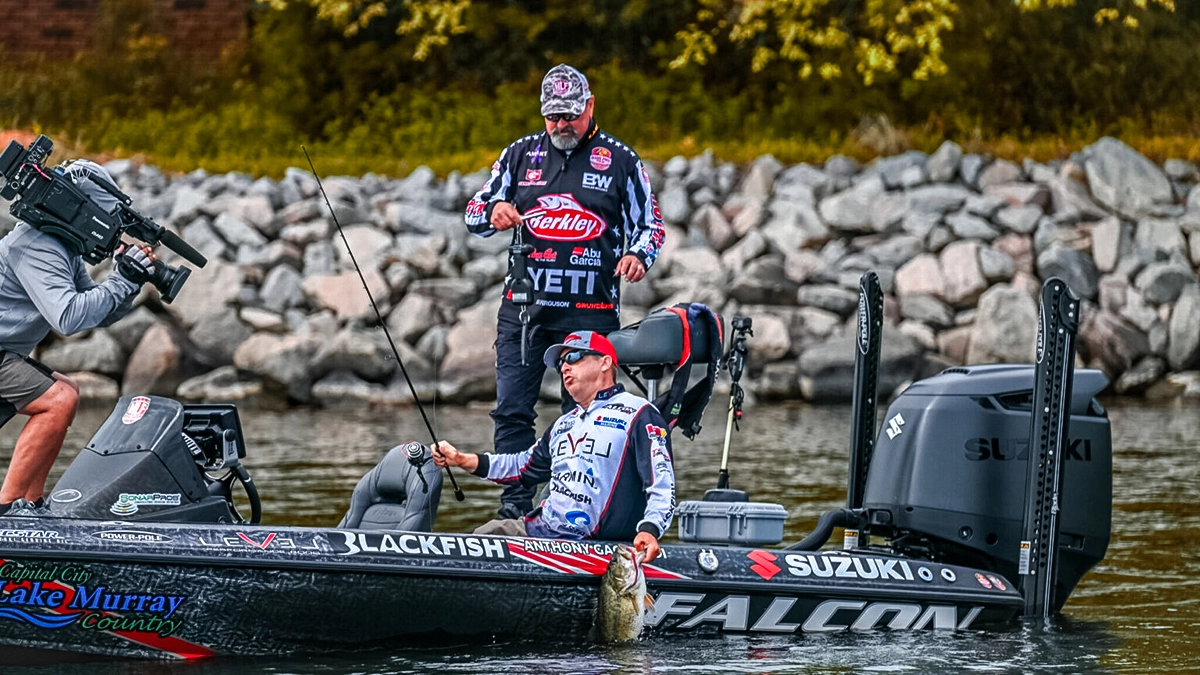
“The NPFL’s decision was a business move, not an anti-technology move or a grab for headlines,” writes Ken Duke, the NPFL media and communications coordinator, on the organization’s website. “Banning a certain technology is not something the league does lightly, but it was and is an opportunity to create differentiation among competitors, and that can be good for business.”
“Although I love what forward-facing sonar has taught and will teach us about bass behavior, I don’t think it belongs at the highest levels of competition any more than I believe aluminum bats should be used in Major League Baseball,” he adds.
The Numbers Game: Competition Field Sizes for 2025
While FFS has been the catalyst for some major changes and a lot of the offseason colloquy, I think it’s only a piece of the puzzle. The larger picture is a numbers game. The overall field size has expanded across three tours, without necessarily increasing fan attention or the size of the viewership.
The NPFL is one part of that; it added a heretofore unheard-of third major circuit, giving anglers not on the Elites or the BPT a chance to fish. At the same time, they’ve also made an effort to give anglers on one of those other tours a second home and an opportunity to increase their income and exposure. The 2025 tour boasts 118 anglers with 76 returning from the 2024 season.
Meanwhile, the BPT is shrinking their field. They’ll go down to 66 anglers this year; that number will be further reduced to 51 in 2026.
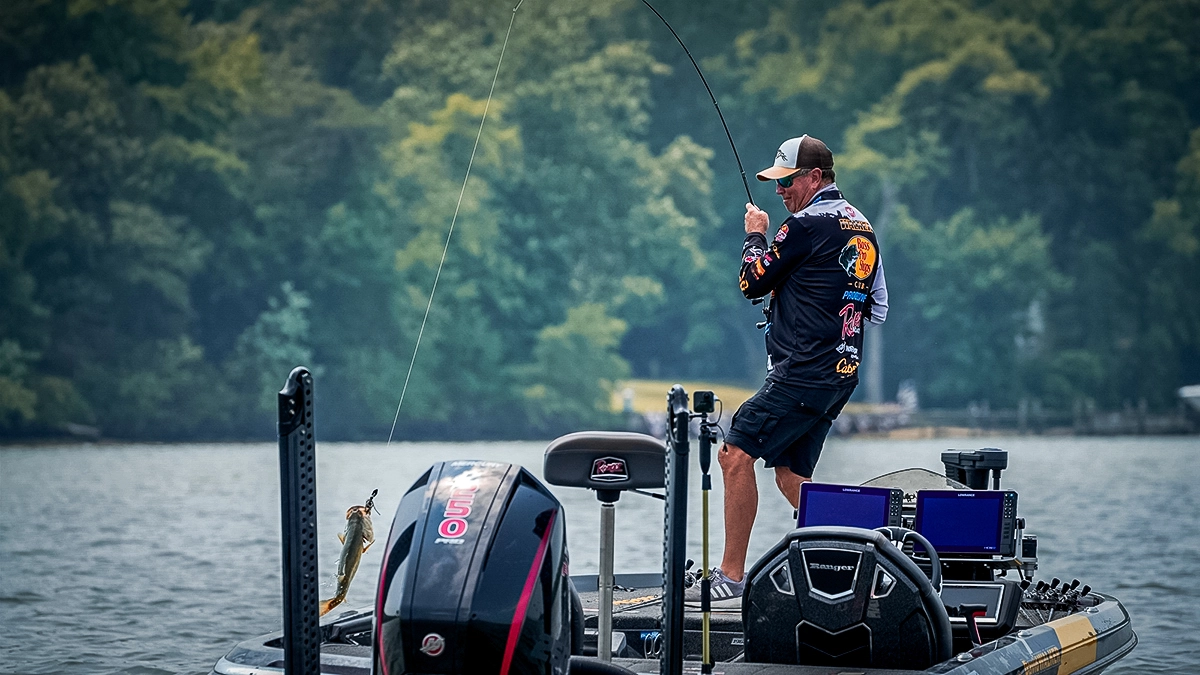
Part of their appeal is that they always have had the big names and the legends of the sport – the Kevin VanDams, the Gary Kleins, the Mark Davises. If those guys are replaced by lesser-known anglers (who may nonetheless be exceptionally talented) does it dim the tour’s appeal? Is that offset by the advantages of a smaller field, most notably the ability to get each angler more livecast, television, and other media time?
The Bassmaster Elite Series will maintain its field size, right at 104 anglers, but it’s not the same 104 as 2024.
Last year, the rookies went on an insane tear, with nine of the 10 making the Classic (all nine qualified through the EQs), and several ending up in the Top 10 in the Angler of the Year race. This year, there will be a new crop of those who survived the rigors of a nine-tournament grind; that’s 20 likely new hammers in two years.
Meanwhile, Rick Clunn retired after 50 years of competing. So did the GOAT, Kevin Van Dam, and multiple title-winner Clark Wendlandt.
The sport has shown that it can build new stars; look at Jacob Wheeler over the past decade, as an example. The big question now is, who will be next and how they’ll get there?
2025 Tournament Season Details
The schedules and details for the NPFL, BM Elite Series, and BP Tour seasons for 2025.
2025 National Professional Fishing League Tour
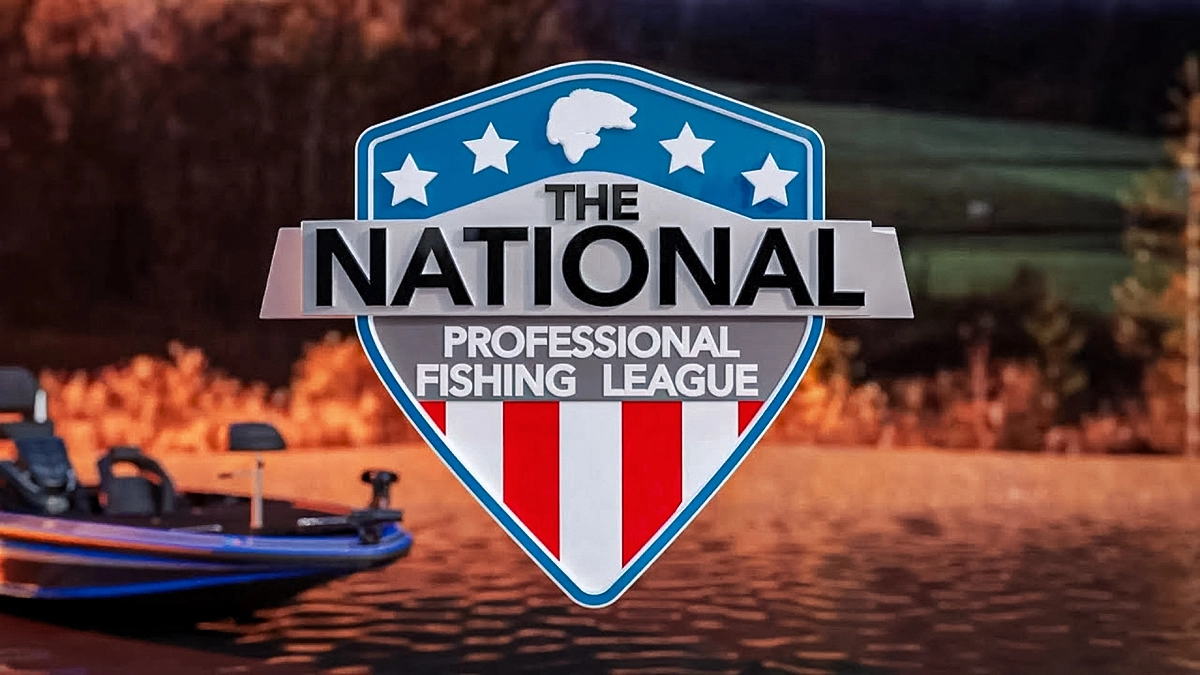
For 2025, the NPFL will hold six qualifying tournaments during which 118 anglers will compete for three days. Each event has a $100,000 winner’s purse with 40 payouts per event. There is a $20,000 Progressive Angler of the Year award that comes with paid entry fees for the 2026 season for the winner.
There will be a $5,200 entry fee per event; there is no entry fee for the Championship for the Top 42 in Progressive Angler of the Year Points along with season champions and returning champion and a $100,000 first-place prize. The Championship has a $250,000 total purse with payouts to all qualifiers.
NPFL 2025 Schedule
Stop 1: Santee Cooper
Clarendon County, South Carolina
March 6 – 8
Launch and Weigh-In: John C. Land III Landing
Stop 2: Lake Norman
Mecklenburg County, North Carolina
April 16 – 18
Launch and Weigh-In: Blythe Landing Park
Stop 3: Douglas Lake
Dandridge, Tennessee
May 22 – 24
Launch and Weigh-In: Dandridge Boat Ramp
Stop 4: Lake Eufaula
Eufaula, Oklahoma
June 18 – 20
Launch: Xtreme Cove Marina
Weigh-in: Nichols Point
Stop 5: St. Lawrence River
Massena, New York
July 9 – 11
Launch and Weigh-In: TBD
Stop 6: Logan Martin
Oxford, Alabama
Sept. 25 – 27
Launch: Lincoln’s Landing
Weigh-In: Oxford
2025 NPFL Championship: Lake Hartwell
Anderson, South Carolina
Date TBD – Fall, 2025
Launch and Weigh-In: Green Pond Landing
You can find the full NPFL 2025 Schedule and more info here.
Bassmasters Elite Series
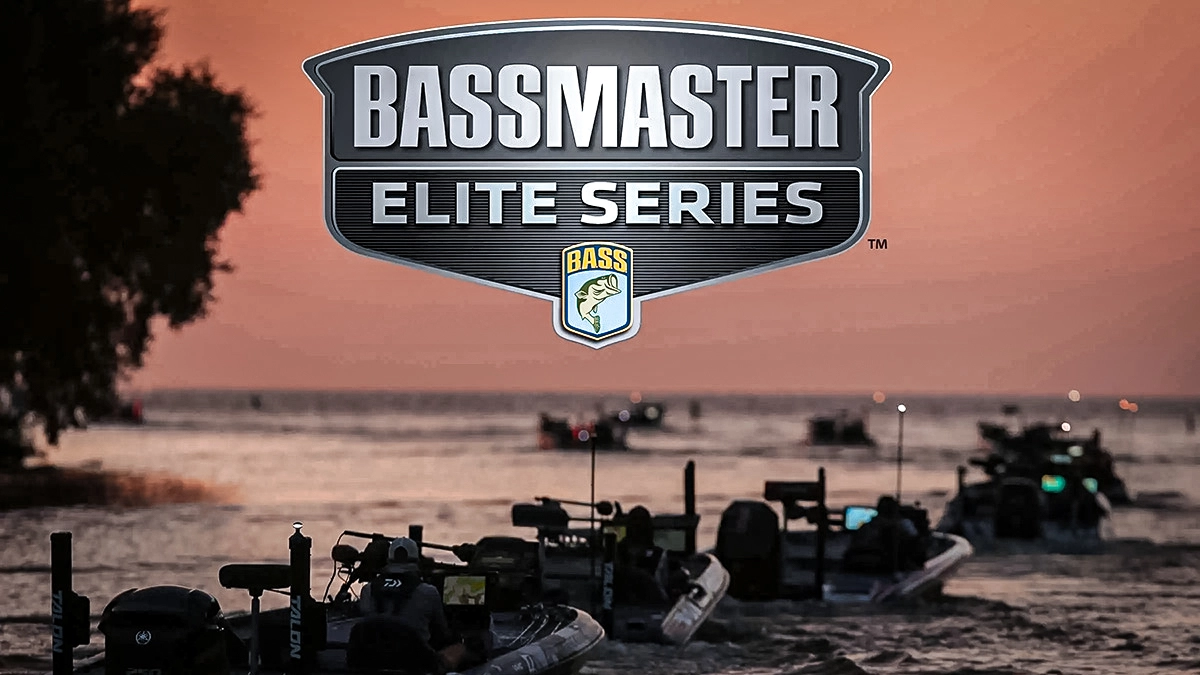
The 2025 Bassmaster Elite Series schedule features a slate of nine events held in seven states across the country on diverse bodies of water. This year marks the 20th anniversary of the tour trail. B.A.S.S. is increasing its contribution to payouts by $200,000 for 2025, which puts the total investment in payouts for the Elite Series and Bassmaster Classic at more than $4.1 million.
For more details on the 2025 Elite payouts, go here.
Bassmasters Elite Series 2025 Schedule
Stop 1: St. Johns River
Palatka, Florida
Feb. 20 – 23
Stop 2: Lake Okeechobee
Okeechobee, Florida
Feb. 27 – March 2
Stop 3, Bassmaster Classic: Lake Ray Roberts
Fort Worth, Texas
March 21 – 23
Stop 4: Pasquotank River/Albemarle Sound
Elizabeth City, North Carolina
April 10 – 13
Stop 5: Lake Hartwell
Anderson, South Carolina
April 24 – 27
Stop 6: Lake Fork
Yantis, Texas
May 8 – 11
Stop 7: Sabine River
Orange, Texas
May 15 – 18
Stop 8: Lake Tenkiller
Cookson, Oklahoma
June 12 – 15
Stop 9: Lake St. Clair
Macomb County, Michigan
Aug. 7 – 10
Stop 10: Mississippi River
La Crosse, Wisconsin
Aug. 21 – 24
2025 Bass Pro Tour
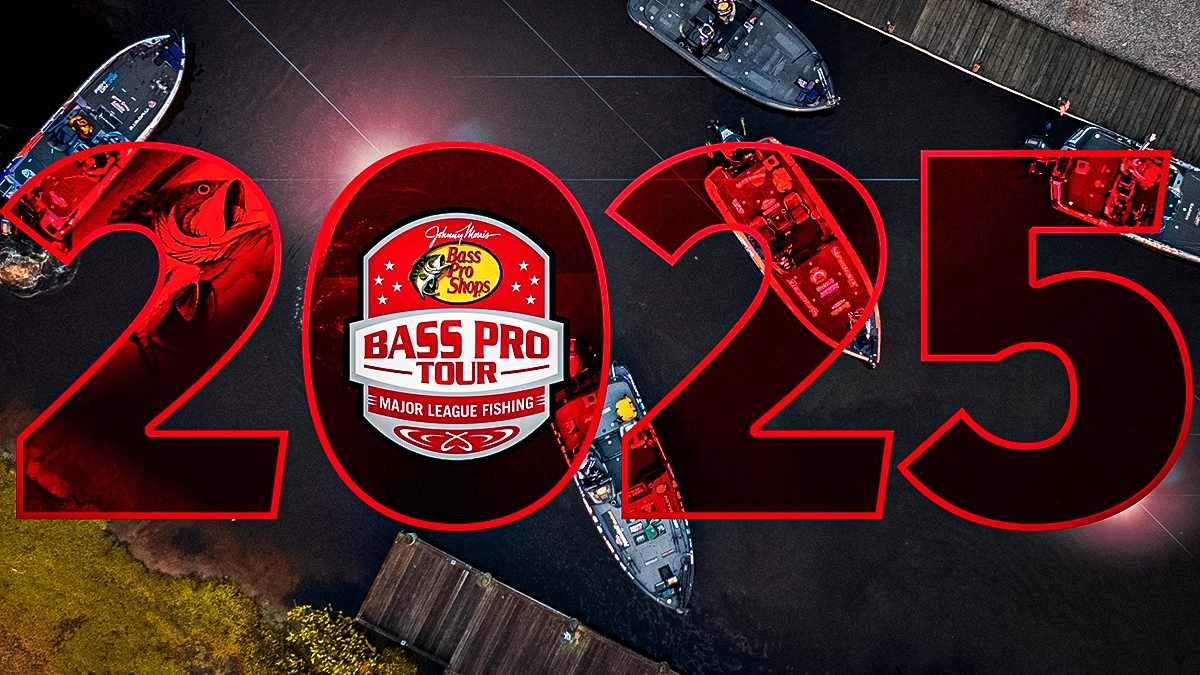
The Bass Pro Tour is Major League Fishing’s top-level competitive circuit. This year, 66 anglers will compete in seven Stage events, culminating with Redcrest, the tour championship. For detailed information on the league anglers, schedule of events, rules, and competition formats for each event, go here.
2025 Bass Pro Tour Schedule
Stage 1 (BP Tour): Lake Conroe
Conroe, Texas
Jan. 30 – Feb. 2
Stage 2 (BP Tour): Harris Chaine of Lakes
Leesburg, Florida
Feb. 13 – 16
Stage 3 (BP Tour): Lake Murray
Columbia, South Carolina
March 6 – 9
Bass Pro Shops Redcrest Championship: Lake Guntersville
Huntsville, Alabama
April 3 – 6
Stage 4 (BP Tour): Chickamauga and Nickajack
Chattanooga, Tennessee
May 1 – 4
General Tire Heavy Hitters: Smith Mountain Lake
Franklin County, Virginia
May 17 – 22
Stage 5 (BP Tour): Kentucky Lake
Calvert City, Kentucky
June 5 – 8
Stage 6 (BP Tour): Potomac River
Marbury, Maryland
June 26 – 29
Stage 7 (BP Tour): Saginaw Bay and River
Bay City, Michigan
Aug. 7 – 10
No Single Factor Dominates
Despite the chicken-little doomsayers, nothing indicates professional fishing is in decline. The fact that so many people want a piece of the pie is prime evidence that demand is there. Yet, the professional enterprise as we once knew it is, indeed, gone. It’ll be harder to make a name for oneself the way Clunn, or KVD, or even Wheeler did.
One contributing factor that has changed the sport dramatically is boat sales, which have always driven the industry through lucrative sponsorships. Sales are down and we’ve all heard the complaints about six-figure price tags.
But the depression in sales is somewhat artificial. Anyone who wanted a boat, and who could afford a boat, bought one during COVID. That depressed subsequent sales, which led some to conclude the industry is in a death spiral. But data from the National Marine Manufacturers Association (NMMA) still shows new freshwater fishing boat sales as one of the largest boat segments in volume, though they acknowledge that total new powerboat retail sales in the U.S. declined an estimated 9 to 12 percent.

What we’re seeing is a natural progression of something like organized professional fishing and the gear associated with it. Once any sport becomes a legitimate business and grows large enough, there will invariably be an arms race to improve the professional-level equipment.
But that doesn’t necessarily mean that the retail buyer has to keep pace. After all, you don’t need a $500 Louisville Slugger to play softball with friends, or a personal trainer and cryotherapy sessions to enjoy a weekend touch football league. A lot of weekend warriors are simply buying the boat they can afford, not buying new boats unless they absolutely have to, or opting to fix up something used.
The retail market does not always parallel the professional one. We have to accept that even if we all want to be pros, not everyone is primed for the tour life, or even the equivalent of an AAU basketball team.
Then there’s the media. Anglers have more control over their exposure than ever before. It’s only a matter of time until we have someone in the Bass Fishing Hall of Fame who’s more known for their podcast or YouTube channel than for their tournament accomplishments. The person or people who figure out how to grow their own audience and the overall audience will hold the reins to our future.
Impact of Tribalism
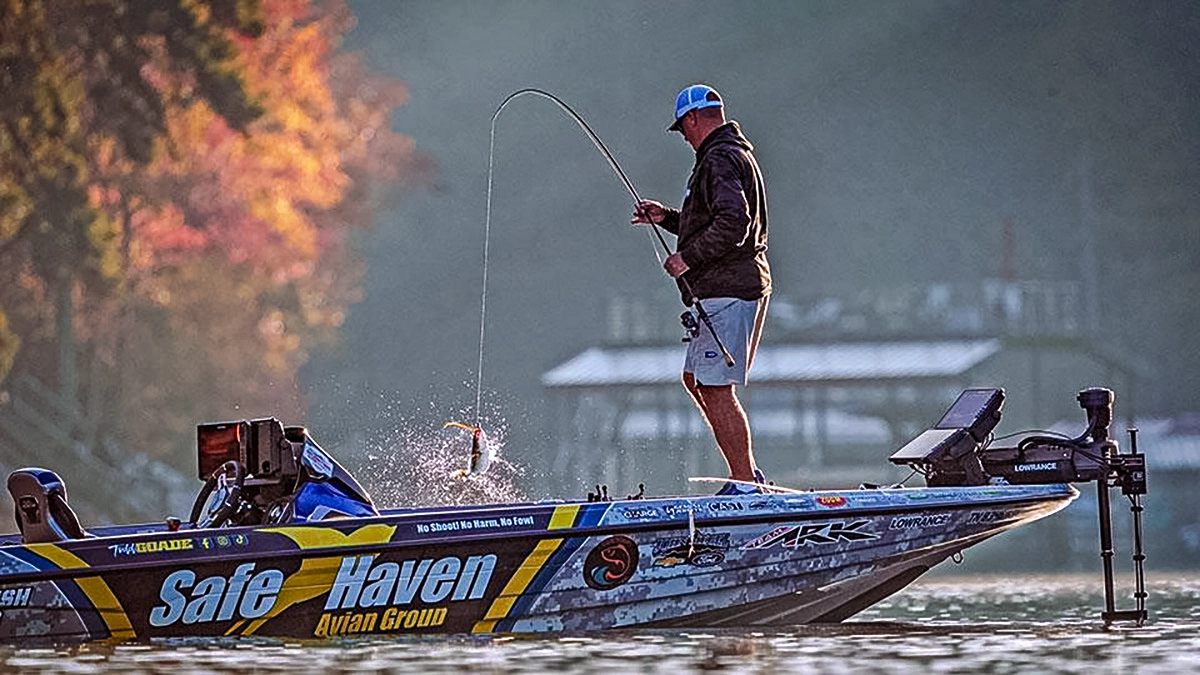
I truly believe that the strength of the bass fishing industry lies in its numbers and its sense of community. That said, the negativity and tribalism has become deafening at times.
There’s no doubt that the megaphone of social media and increased connectedness have given us good things: we can get more accurate information about fisheries, weather conditions, and everything else faster than ever before. But it’s also led to conflict. If you want to see the numbers, check out the high school and college ranks, which are growing with modest help from the leagues. Look at the Bassmaster Opens, where you have to get on a waiting list to enter the tournaments.
People want to compete. People want to fish. Even if they’re spending more money on jigheads than buzzbaits, the net result is at least the same – people are hitting the water. Go to a Bassmaster Classic event and see people in line to get autographs from 78-year-old Rick Clunn and 19 year old Trey McKinney and YouTuber-turned-pro Ben Milliken.
A decade ago, before it became an overhyped cliché, we talked about “disruptors” — people or companies who saw an inefficiency and found a way to fix it in spite of accepted norms. Our sport has had its share of major influencers – like Ray Scott and Johnny Morris – people who’ve elevated the sport. What we need right now is someone with the charisma and vision to bring back a sense of connection.
No, we’re never going to agree on whether FFS is good, or tournaments should be held at certain times on certain waters, or even how green pumpkin should look, but the person or people who can harness all of this energy and direct will be the sport’s next entrant on Mount Bassmore.


